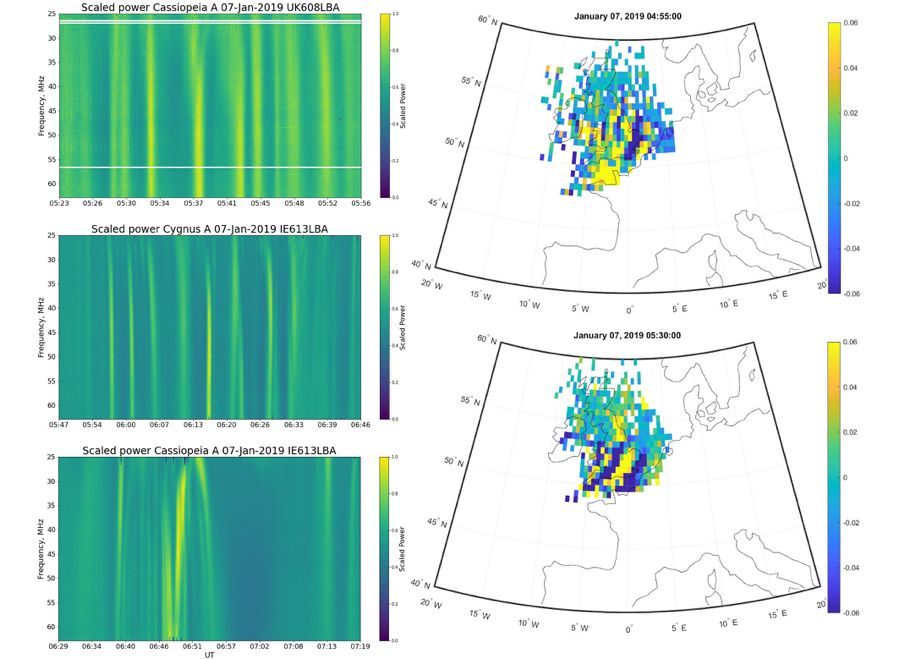MIST
Magnetosphere, Ionosphere and Solar-Terrestrial
LOFAR Observations of sub-structure within a Travelling Ionospheric Disturbance at mid-latitude
By Gareth Dorrian (Space Environment & Radio Engineering, University of Birmingham)
Travelling ionospheric disturbances (TID) are ubiquitous wave-like propagations in the Earth’s ionosphere and are the ionospheric counterpart of neutral atmospheric gravity waves (AGW). AGW can be driven by numerous sources from both the terrestrial and space weather domain such as sunrise, auroral sub-storms, volcanic eruptions, or thunderstorms. Terrestrial drivers from the lower atmosphere are coupled to the thermosphere by upwards propagation of AGW (Hines, 1960).
We study the ionosphere using LOFAR observations of trans-ionospheric radio propagation from compact natural radio sources. This is advantageous as, unlike most artificial satellites, natural radio sources are inherently broadband emitters and LOFAR is a broadband receiver with high frequency and time resolution. The behaviour of radio scattering through the ionosphere can thus be observed simultaneously across many frequencies.
Observations using the LOw Frequency ARray (LOFAR: van Haarlem et al., 2013) of trans-ionospheric radio propagation through a TID over the UK were made on 7 January 2019 (Figure 1). In LOFAR data, ionospheric variability manifests as rapid changes in the received signal from the radio source. Using this technique, internal sub-structure within the TID were clearly identified with dominant modes of oscillation on timescales of ~300s. At the observing geometries used these oscillations equated to sub-structure scale sizes of ~20 km. Contemporary GNSS and ionosonde data were used to provide the global parameters of the TID. At the observation frequencies used (25-65 MHz) the Fresnel scale is between 3-4 km; consequently the majority of the scattering features observed were lens-like refractions, rather than diffractive scintillation. Geomagnetic conditions at this time were very quiet, suggesting a terrestrial driver.

Figure 1: Left panels: LOFAR dynamic spectra from UK and Irish stations showing rapid variations in received signal power across the full observing band, caused by passage of TID internal substructure across raypath. Right panels: GNSS plasma anomaly maps from the observing period with the wave-like form of the TID clearly visible over the UK.
Original article for further details:
Dorrian, G., Fallows, R., Wood, A., Themens, D. R., Boyde, B., Krankowski, A., et al. (2023). LOFAR observations of substructure within a travelling ionospheric disturbance at mid-latitude. Space Weather, 21, e2022SW003198. https://doi.org/10.1029/2022SW003198
References:
van Haarlem, M. P., Wise, M. W., Gunst, A. W., Heald, G., McKean, J. P., Hessels, J. W. T., et al. (2013). LOFAR: Low-frequency-array. Astronomy and Astrophysics, 556, A2. https://doi.org/10.1051/0004-6361/201220873
Hines, C. O. (1960). Internal atmospheric gravity waves at ionospheric heights. Canadian Journal of Physics, 38(11), 1441– 1481. https://doi.org/10.1139/p60-150